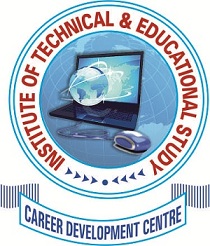
A Diploma in Computer Application & Web Designing typically provides students with comprehensive knowledge and skills in computer applications and web design. This program aims to equip students with the necessary tools to develop and design websites, as well as to utilize computer applications effectively.
Here are some key areas of study typically covered in a Diploma in Computer Application & Web Designing program:
1. Computer Fundamentals: Students learn the basics of computer hardware, software, and operating systems. This includes understanding computer components, file management, and basic troubleshooting.
2. Programming Languages: Introduction to programming languages like HTML, CSS, JavaScript, and possibly other languages like PHP or Python. Students learn how to write and structure code to create web pages and interactive elements.
3. Web Design Principles: Students gain knowledge of design principles, including layout, color theory, typography, and graphics. They learn how to create visually appealing and user-friendly websites.
4. Web Development Tools: Students are introduced to various web development tools and software. This may include content management systems (CMS) like WordPress, website builders, and code editors.
5. Database Management: Basic understanding of database concepts and management. Students learn about creating and managing databases using tools like MySQL or Microsoft Access.
6. Multimedia and Graphics: Introduction to multimedia elements, such as images, audio, and video. Students learn how to incorporate multimedia into web design effectively.
7. User Experience (UX) Design: Focus on designing websites with a user-centered approach. Students learn about user research, prototyping, and usability testing to create intuitive and engaging user experiences.
8. Responsive Web Design: Understanding how to create websites that adapt to different screen sizes and devices. Students learn about responsive design techniques using frameworks like Bootstrap.
9. Project Work: Practical projects allow students to apply their skills and knowledge to create fully functional websites. This hands-on experience helps them develop a portfolio of work to showcase their abilities.
10. Internet and Web Technologies: Introduction to internet protocols, web servers, and web hosting. Students learn how websites are deployed and made accessible on the internet.
Career Opportunities:
Upon completion of a Diploma in Computer Application & Web Designing, graduates can pursue various entry-level positions in the field of web design and development. Some potential job roles include:
– Web Designer
– Front-end Developer
– UI/UX Designer
– Web Developer
– Freelance Web Designer
– E-commerce Web Designer
– Web Content Manager
– Web Design Assistant
It’s important to note that the specific curriculum and career opportunities can vary between different educational institutions and regions. It’s advisable to research and review the course details of specific programs to understand the exact content and outcomes they offer.
